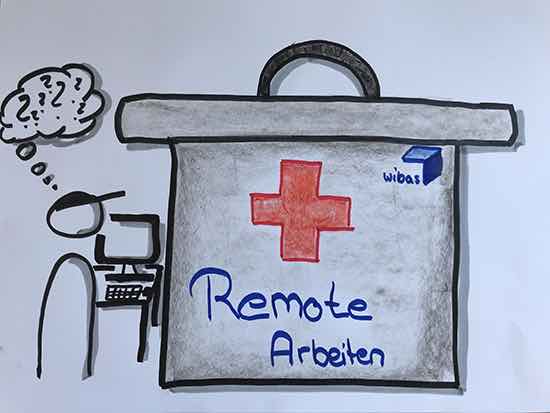Because we can no longer simply go to the colleague at the next table to ask them something, we now sit together in even more meetings than before.
A good technical infrastructure is essential for successful meetings. For good communication, a separate audio / microphone using headsets has proven its worth, as keystrokes are transmitted very loudly in the integrated laptop microphone. In addition, a video makes a meeting more personal - for this you need a good camera.
Another success factor for well-running meetings is a good meeting culture. You can find ideas and suggestions, some of which have also proven successful in physical work, here:
Good practices for meetings
- Agenda is created and 'timeboxed'
- Be on time
- Agenda and objective of the meeting were sent to the participants in the invitation
- Participants who can make a concrete contribution to the goal are invited
- Moderator for the meeting was appointed
- Technology was tested in advance and is ready for use on time
- Meeting objectives are communicated at the beginning
- Participants briefly introduce themselves (also remote)
- Agenda is presented
- Always keep the scope in mind during discussions
- For discussions that are not the focus of the agenda item but are still relevant, the topic is placed in a "parking lot" and considered at a later date
- There is a visual way to mark a request to speak & still not disturb the flow of speech (e.g. hand signals on Skype in chat function)
- Use value cards such as Focus or cards such as ELMO to obtain mood pictures in the group wordlessly
- The meeting participants let each other finish speaking and only one person speaks at a time.
- Speeches should be kept short and efficient. The statement should be formulated in concise language and not as a monologue.
- Results are documented and sent to the participants
- Count to 10 after a question has been asked (the answer usually takes longer remotely)
Strengthen confidence building & consolidation when working remotely
In addition to this foundation for a good meeting and discussion culture, a challenging factor is to keep the building and consolidation of trust within the team stable remotely.
It is even more difficult to consolidate trust or even build it in the first place - in this perceived plastic way of working - and takes more time than before. To counteract communication obstacles, we recommend, for example, a video chat that includes all levels of communication (facial expressions/gestures, auditory). Skype, MS Teams or Zoom, for example, are suitable here.
For the use of new tools, an extra 10 minutes can be expected in meetings so that the participants have enough time to set up. Training in the tools by IT is essential and saves a lot of time. In general, the simplicity of the technology and structuring it as simply as possible plays an important role.
In order to maintain or improve a sense of team spirit, the following can help:
- Mood barometer
- Eye contact (video chat)
- Continuous video conference
- Emotional mood index (everyone tells something from their private life or what concerns them emotionally)
- "Virtual coffee" twice a week for 15 minutes, virtual breakfast or lunch together
- Addressing people directly
- Openly expressing incomprehensibilities
- Request to speak by name & wait briefly until your turn is taken
Do you need more information or specific support? We are happy to help you and offer support for these special requirements with the Implementation of remote workshops and the Coaching distributed teams.
We look forward to hearing from you and shaping the New Normal together!


Write a comment